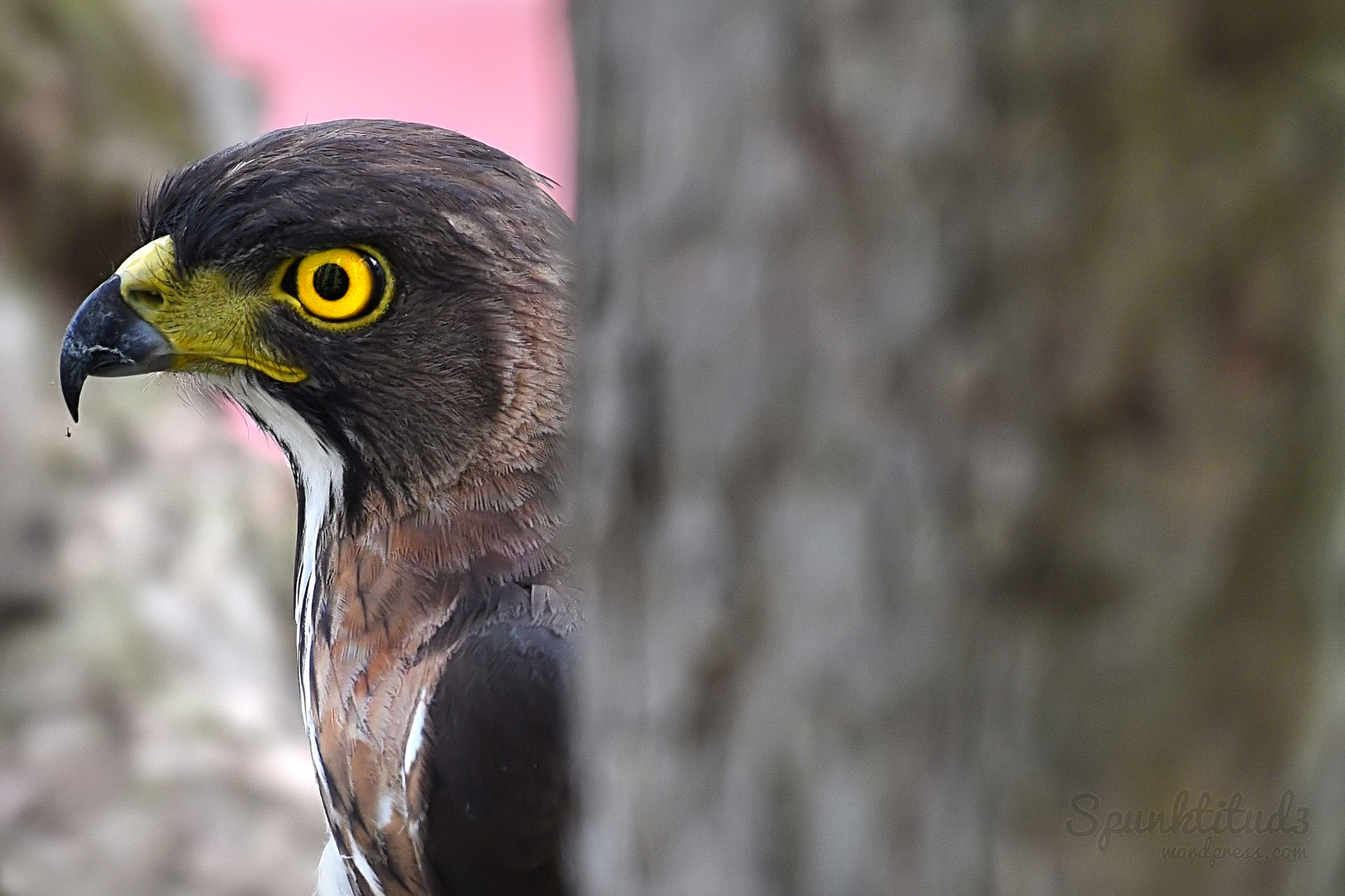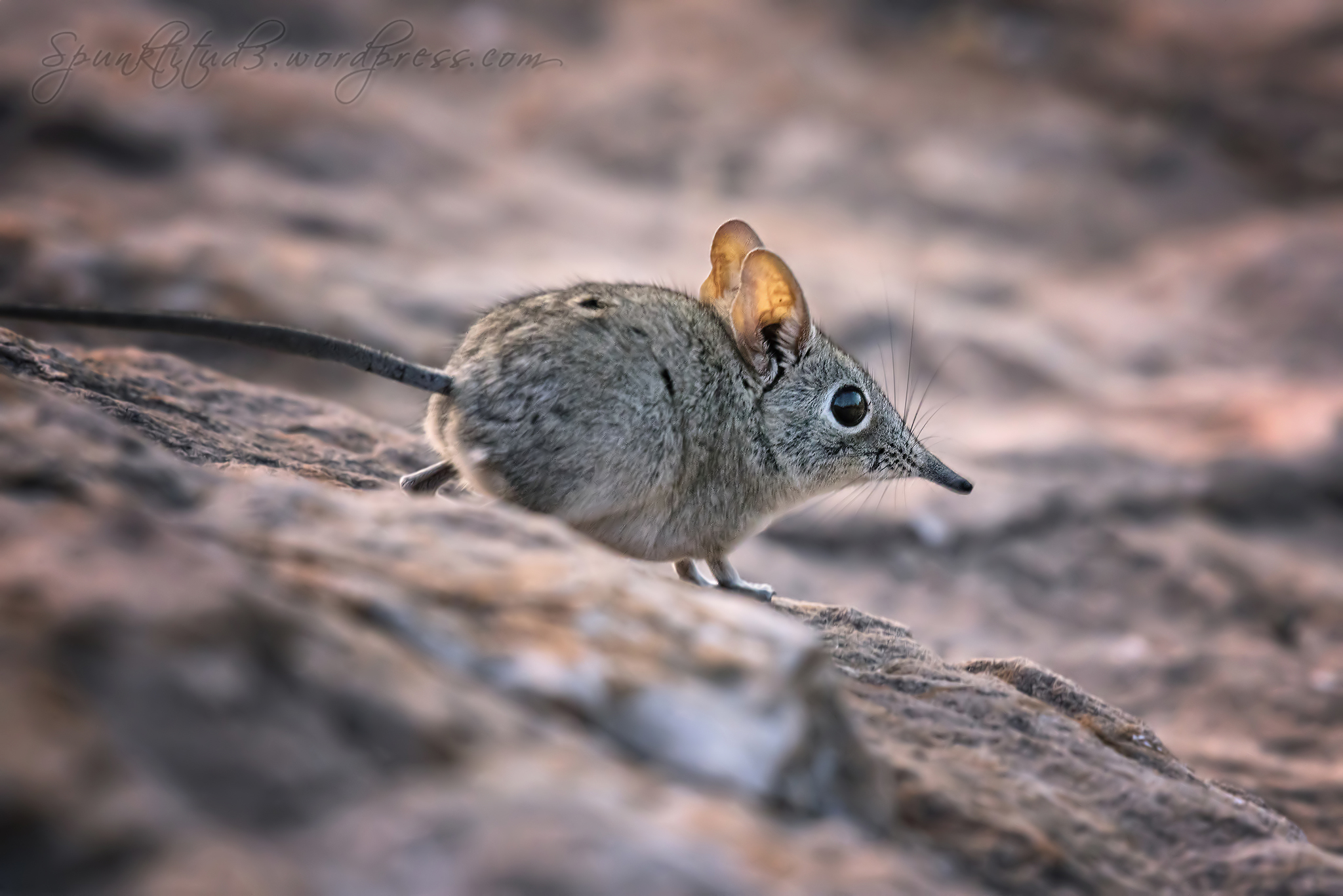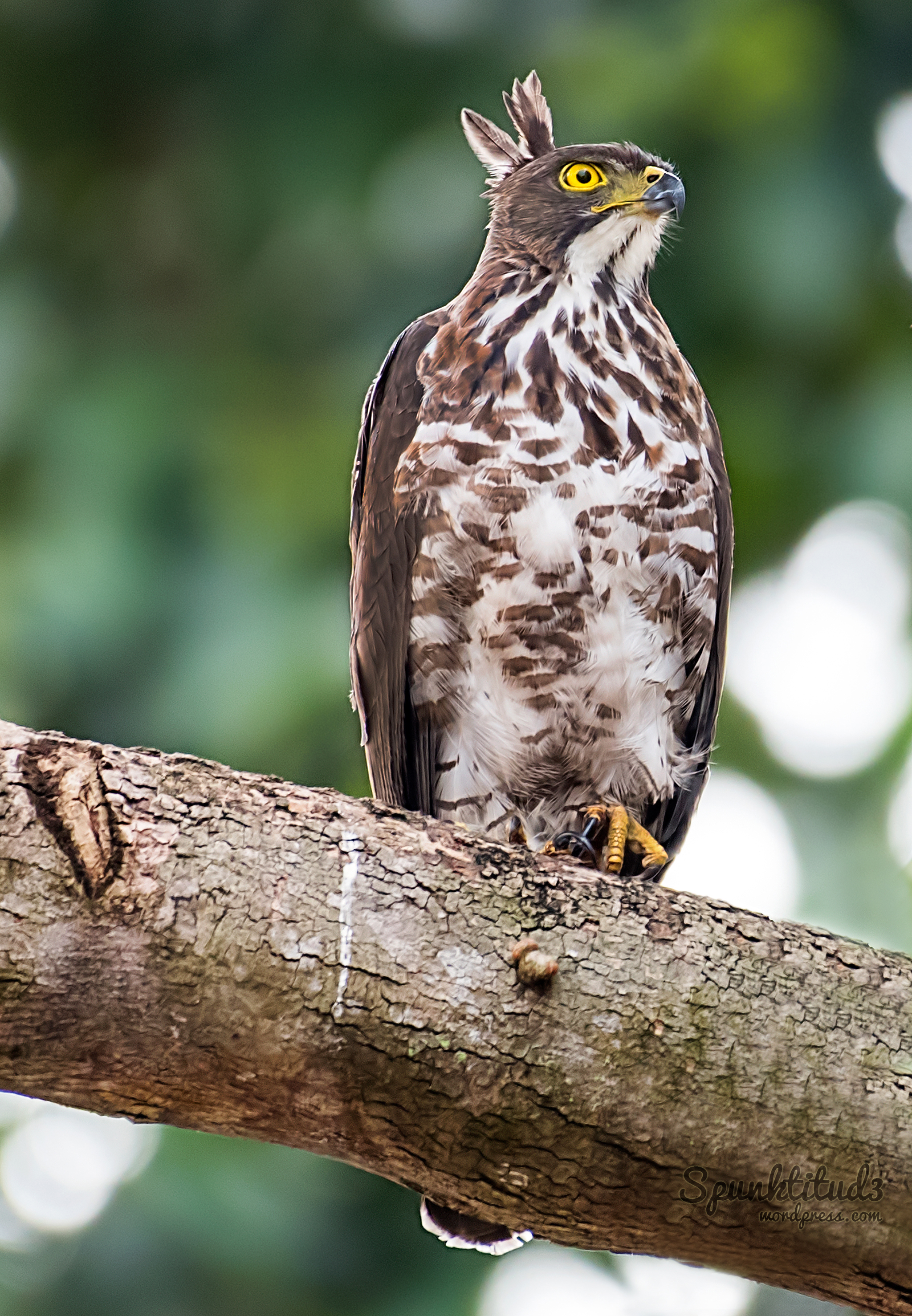 The Crested Goshawk (Accipiter trivirgatus) is a bird of prey from tropical Asia, and the only resident and rare accipiter in Singapore.
The Crested Goshawk (Accipiter trivirgatus) is a bird of prey from tropical Asia, and the only resident and rare accipiter in Singapore.
There are 11 subspecies of goshawks, with the one in Singapore being indicus whch has the widest range from north India east to China and south to Singapore. Know as Helang-Sewah Berjambul in Malay or 凤头鹰 in Chinese, this bird of prey is found in tropical and warm subtropical areas. The Crested Goshawk can be identified by its short crest, yellow eye-rings, 6 fingers, short wings when perched, thick tail bands and thick tarsi.
This bird is a female who recently found a liking for a particular tree branch just outside my friend’s flat. The crested goshawk inhabits deciduous and evergreen forests in humid lowlands and foothills, and have been sighted in nature reserves and parks in Singapore, so I guess the loss of their habitat has gradually forced them to come to housing estates. This particular female bird was teaching its baby goshawk, which came earlier in the morning, how to hunt.
The crested goshawk preys on large insects, small birds, small mammals (such as fruit bats, rats) and reptiles. It surprises its prey by diving from its perch. We have seen it coming back with rats or blood on its beak.
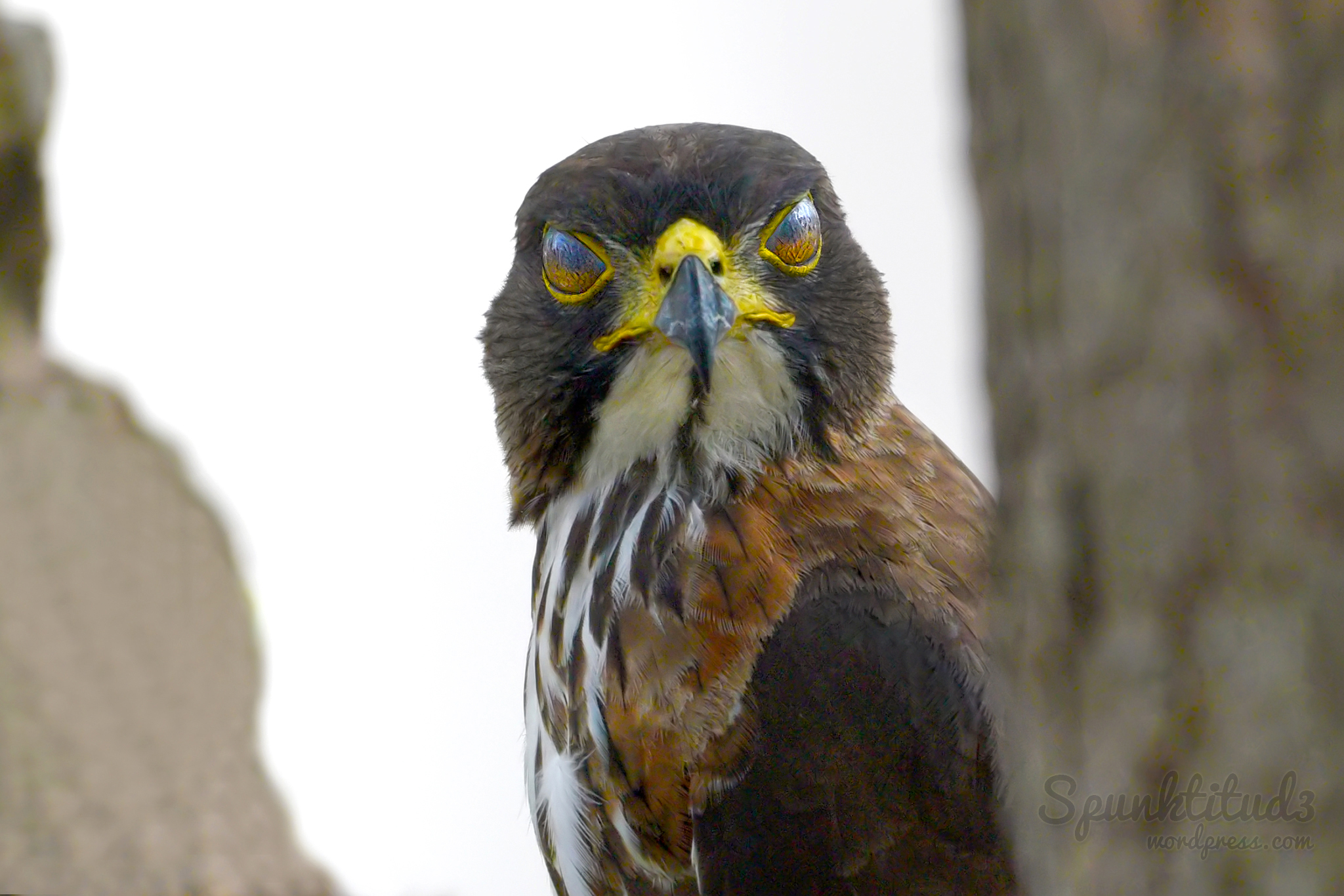
And she blinked at me. Somehow she reminds me of a Marvel Hero like this. Well, as long as I don’t look like food to her I am fine with the attention. The crested goshawk is small compared to most other raptors, measuring 30 to 45 cm in length and weighing about 350 grams. The female goshawk is slightly larger weighing around 550 grams. The wingspan is 50 to 80 cm. The male has a dark brown crown with a grey head and sides, black moustachial and throat stripes. The female goshawk has brown plumage. Its call is a high-pitched tone.
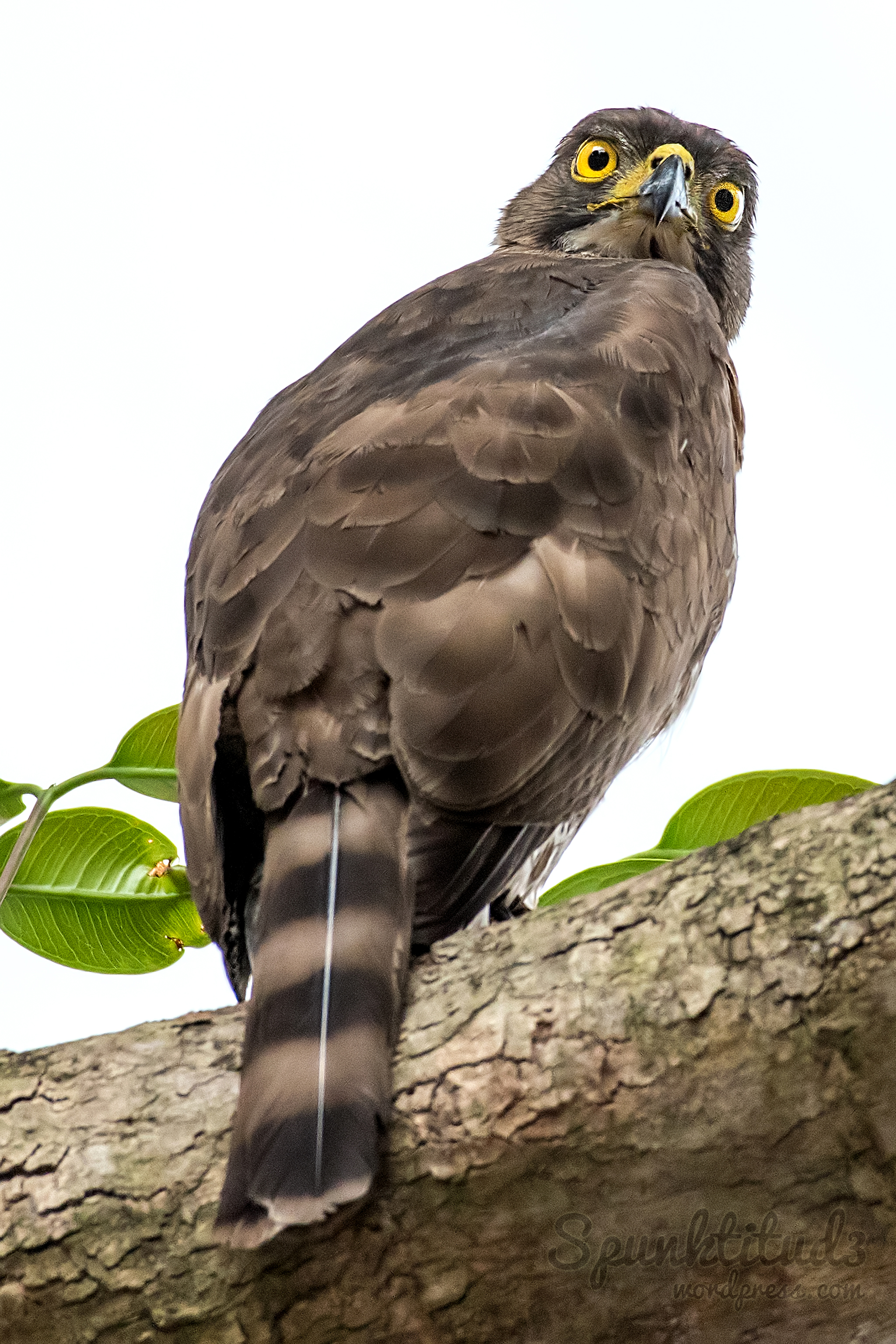 Glad I managed to see this pretty raptor (I have decided to name her Bunny – inspired by the first photo). Hope she and her baby will continue to co-exist well with urban Singapore.
Glad I managed to see this pretty raptor (I have decided to name her Bunny – inspired by the first photo). Hope she and her baby will continue to co-exist well with urban Singapore.
Information source: Singapore Raptors

